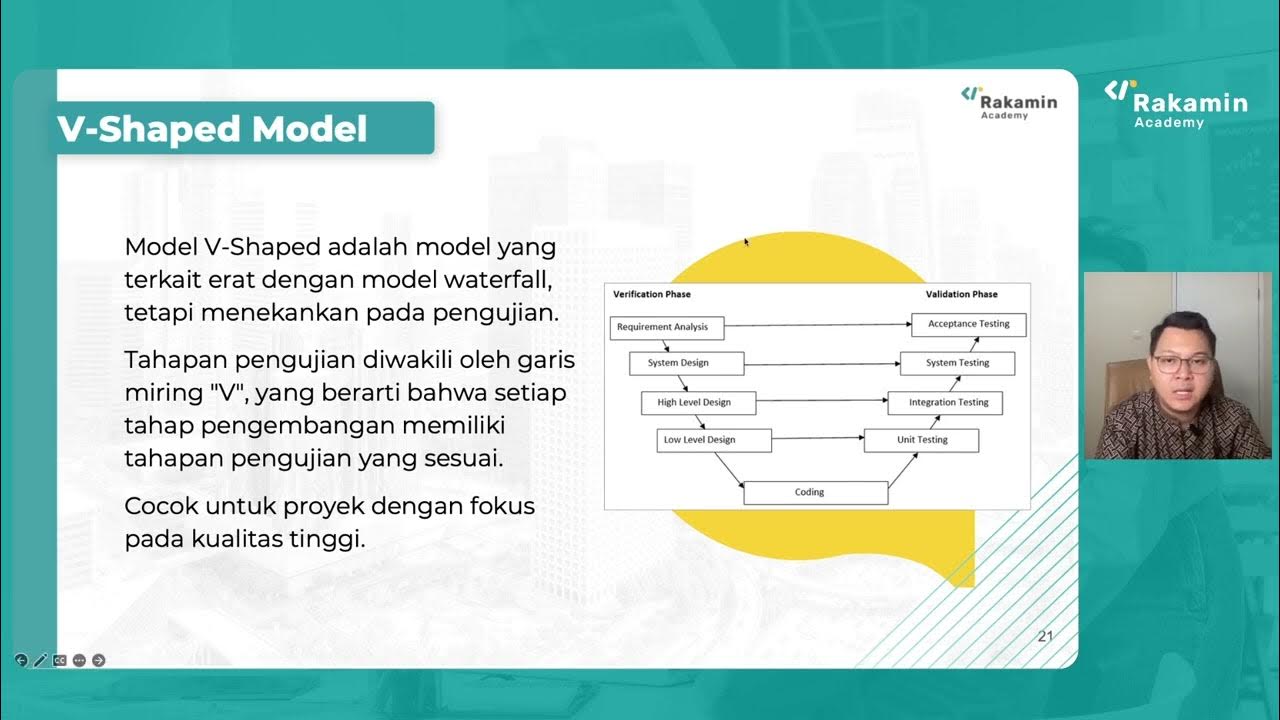Software Testing Tutorial #7 - Software Testing Life Cycle (STLC)
Summary
TLDRThis tutorial introduces the Software Testing Life Cycle (STLC), explaining its role in software development. It walks through each phase of STLC, including requirements analysis, test planning, test case design, test environment setup, test execution, and reporting. The video emphasizes the importance of understanding these phases for those aiming to work in software testing, highlighting how STLC fits into both waterfall and agile methodologies. The presenter also touches on differences in documentation and reporting between agile and waterfall approaches, offering tips for interviews and practical project work.
Takeaways
- 🛠️ Software Testing Life Cycle (STLC) is a key process that fits within the Software Development Life Cycle (SDLC) to test any application or software.
- 🔍 The first phase of STLC is Requirements Analysis, where the testing team understands and analyzes the software requirements to create potential test cases.
- 📝 Test Planning follows the analysis phase, where the team creates a test plan, detailing the scope, test timelines, resources, and strategies.
- 📄 In the Test Case Design and Development phase, testers develop test cases using design techniques like equivalence partitioning and boundary value analysis.
- 🔧 Test Environment Setup is the fourth phase, where a testing environment is prepared to execute test cases. This could involve setting up test data and ensuring proper deployment of the code.
- 🚀 Test Execution involves running the test cases in the test environment and verifying if the software meets the expected results.
- 📊 Test Reporting follows test execution, where a summary of the testing process, including passed and failed test cases, is documented and shared with the team.
- 🗃️ Test Closure is the final phase, where all testing activities are summarized and documents are handed over to the relevant teams for future reference.
- 🌀 In Agile methodologies, the testing cycle is shorter and more iterative, but the same core phases of STLC apply with quick sprint planning, test case development, and automated reporting.
- 🏁 Understanding STLC thoroughly is essential for testers to quickly adapt and work efficiently in any organization, ensuring proper software testing and quality assurance.
Q & A
What is the Software Testing Life Cycle (STLC)?
-The Software Testing Life Cycle (STLC) is a series of phases or processes within the software development life cycle that is used to test a software application or product. It defines the various stages involved in testing, starting from the requirement analysis phase to the test closure phase.
What is the importance of understanding STLC for a software testing job?
-Understanding STLC is crucial for a software testing job because it provides a clear structure of the testing process, helping testers to understand what activities are expected at each stage. This knowledge enables them to collaborate effectively with the development team and ensure thorough testing of the product.
What is the first phase of the Software Testing Life Cycle, and what activities are involved in it?
-The first phase of the Software Testing Life Cycle is 'Requirement Analysis'. In this phase, the testing team analyzes the requirements to understand what needs to be tested. The team identifies any gaps or ambiguities in the requirements and provides feedback to the development team or the product owner.
What is the purpose of the Test Planning phase?
-The purpose of the Test Planning phase is to create a test plan based on the analyzed requirements. This includes determining the scope of testing, resources needed, test schedule, risk assessment, and defining the overall testing strategy.
What does the Test Case Design and Development phase involve?
-The Test Case Design and Development phase involves designing and creating test cases based on the analyzed requirements. Techniques like equivalence partitioning and boundary value analysis are applied to ensure comprehensive coverage of all scenarios.
What is Test Environment Setup, and why is it necessary?
-Test Environment Setup involves configuring the hardware and software environment where testing will be conducted. It is necessary to ensure that the testing team has a stable and suitable environment to execute the test cases and validate the software functionality.
What activities are performed during the Test Execution phase?
-During the Test Execution phase, the testers run the test cases that were developed in the previous phase and record the results. They verify whether each test case passes or fails based on the expected outcomes and report any defects found during testing.
What is the Test Reporting phase, and what information is included in a test report?
-The Test Reporting phase involves documenting the results of the testing process. The test report includes details like which test cases passed or failed, any open defects, the overall testing status, and the level of confidence in the software's stability.
What happens during the Test Closure phase?
-During the Test Closure phase, the testing team finalizes the testing process by preparing closure documents that include all testing-related artifacts, test cases, and summary reports. These documents are handed over to the maintenance team or relevant stakeholders.
How does the STLC differ in Waterfall and Agile methodologies?
-The core phases of STLC remain the same in both Waterfall and Agile methodologies. The primary difference lies in the timing and documentation process. In Waterfall, each phase is completed sequentially, often over a longer period, whereas in Agile, the phases are repeated in short iterations or sprints, and documentation is less formal and more collaborative.
Outlines

This section is available to paid users only. Please upgrade to access this part.
Upgrade NowMindmap

This section is available to paid users only. Please upgrade to access this part.
Upgrade NowKeywords

This section is available to paid users only. Please upgrade to access this part.
Upgrade NowHighlights

This section is available to paid users only. Please upgrade to access this part.
Upgrade NowTranscripts

This section is available to paid users only. Please upgrade to access this part.
Upgrade Now5.0 / 5 (0 votes)





